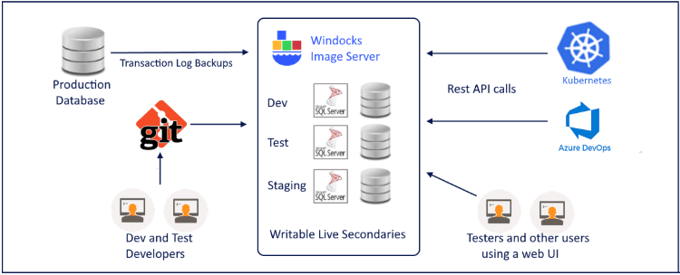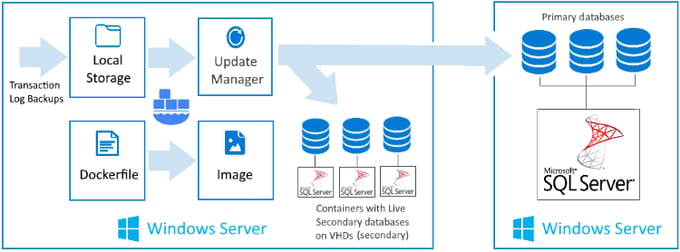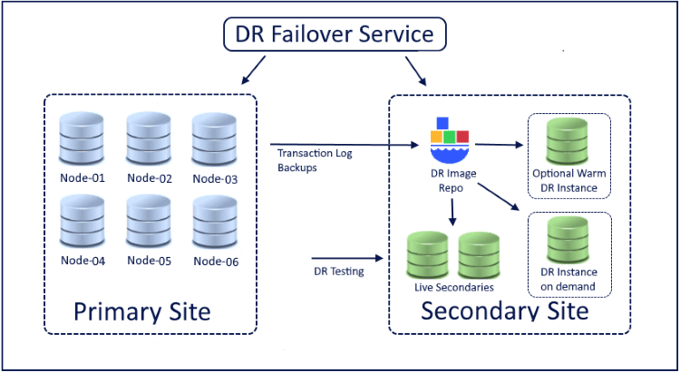We’ve expanded our blog publishing on linkedin in recent months, and have covered a variety of topics related to Live Secondaries. Read more here.
Windocks now supports near real-time production database cloning, with continually updated database images with transaction log backups (log shipping). Previously Windocks users needed to periodically rebuild database images to provide up-to-date database environments. Now images are built once and updated continuously with transaction log backups for near real-time production data with “live secondary” databases. Live Secondaries enhance development and test, but also support new uses including production database debug support, DR and DR readiness testing, tested database migration, SSRS, and performance testing.
DevOps and performance testing
Live secondary databases support test cycles measured in seconds, with an artifact that supports the complete CI pipeline. Git and other source control systems are easily integrated, and restful APIs support orchestration with Azure DevOps and other CI servers.

The live secondary database image can automate the creation of performance testing environments on a dedicated VM, further simplifying a complete database devops solution.

More on how Live Secondaries compare to databases built from source for devops, read here
Tested, high confidence DR
A central database image repository can support all primary site databases and failover to warm instances or instances created on demand. Live secondary databases support DR readiness testing for high confidence failover support. Database images are updated with transaction log backups, and Recovery Point Objectives (RPO) are measured in minutes depending on transaction log backup frequency.

Tested database migrations
Live secondary database images simplify database migrations by providing production ready environments in no-recovery, and live secondary databases for pre-migration testing. Live secondary databases also support mirrored production user traffic (contact us for details), for testing at scale to prove the migrated databases are production ready.

Production debug
The ability to deliver production databases to support debugging is a logical part of SQL Server development and test, but often overlooked. Fast delivery of databases for debugging is important for responsive customer support, and live secondary databases naturally support this need. Security is built into the image with data masking and encryption, and debug can use either from the latest update or a point-in-time update. Once a fix is developed, push the fix to the source repo, and then simply provision new environments for confirmation testing. On completion of testing deploy the fix to production.

SSRS
Reporting Service (SSRS) containers provide a scalable reporting solution for SQL Azure and AWS RDS, and wherever report server instance consolidation is needed. SSRS containers are supported by an image and are delivered configured and ready for use in seconds, and are easily updated and managed. SSRS containers can also be orchestrated and managed by Kubernetes, for a modern cloud-native solution. SSRs containers are attractive for license savings as multiple SSRS containers can run on a shared server, and support scale out as needed.

Are you ready to pilot live secondaries?
Delivery of near real-time production database on-demand, with as many as 50 or more clones on a single server is a game-changer for many SQL Server uses. If you’re interested to explore a supported no-cost pilot, contact us.
